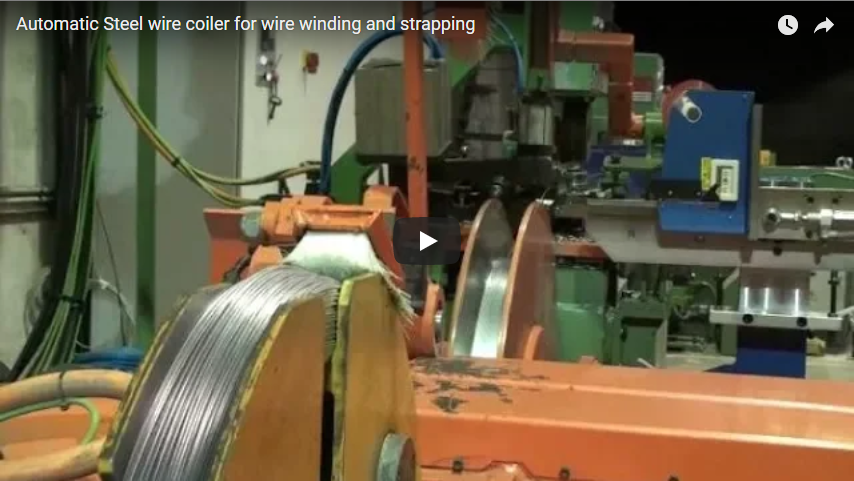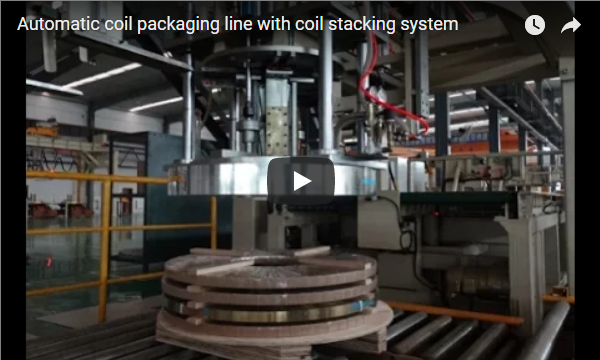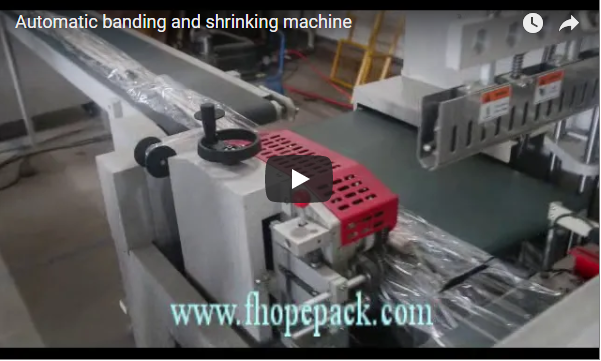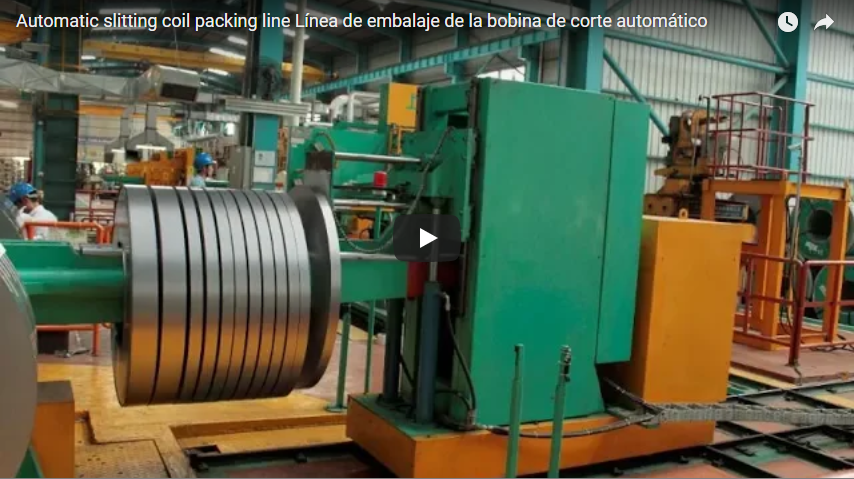Revolutionizing Steel Wire Logistics: The Power of Automated Rewinding and Compacting Lines
Steel wire coils are foundational elements across diverse industrial sectors, underpinning construction, automotive manufacturing, energy, and beyond. However, the journey from production to end-use is fraught with logistical complexities. Handling, packaging, and transporting these heavy, bulky, yet surprisingly sensitive coils present significant operational challenges. Traditional methods, often reliant on manual labor or basic mechanization, struggle to meet modern demands for efficiency, safety, and quality consistency, impacting productivity and profitability. The solution lies in sophisticated automation: fully integrated steel wire coil rewinding and compacting lines.
This article explores how advanced automated packaging systems are not just overcoming historical challenges in Steel Wire Coil Production but are setting new benchmarks for operational excellence. Drawing insights from industry best practices, technical specifications, and emerging technological trends, we examine the tangible benefits and strategic advantages offered by embracing end-to-end automation.
The Operational Hurdles in Steel Wire Coil Handling
Manufacturing and processing steel wire coils involves intricate steps demanding precision. Yet, inherent characteristics of the product introduce persistent challenges:
- Significant Weight and Size: Coils can weigh from hundreds of kilograms to several metric tons. Manual or semi-automated handling is not only slow and inefficient but poses substantial ergonomic risks and safety hazards, as highlighted in numerous occupational safety studies (e.g., OSHA guidelines on heavy material handling).
- Susceptibility to Damage: Despite their industrial nature, steel wire surfaces are prone to scratches, corrosion (rust), and deformation (dents) if improperly handled or packaged. Such defects can compromise material integrity and lead to costly rejections.
- Inconsistent Packaging Standards: Manual wrapping or strapping often lacks uniformity in tension and coverage. This variability increases the risk of coil collapse, unwinding, or damage during storage and transit, directly impacting supply chain reliability.
- Labor Intensity and Costs: Traditional packaging workflows demand significant manual input, contributing to higher labor costs, slower throughput, and potential inconsistencies tied to human factors.
- Workplace Safety Concerns: The direct manual manipulation of heavy coils is a leading cause of industrial injuries, including musculoskeletal disorders, crushing incidents, and falls, impacting workforce well-being and incurring associated costs (worker's compensation, lost time).
Addressing these multifaceted challenges requires a systemic shift towards automation, capable of delivering consistency, safety, and efficiency at scale.
Introducing Automated Rewinding and Compacting Lines: A Technical Overview
Automated steel wire coil packaging lines represent a synergy of advanced mechanical engineering, sensor technology, and control systems specifically designed for the demanding environment of steel processing. These integrated solutions automate the entire post-production handling sequence. According to market analysis reports (e.g., from firms like Grand View Research or MarketsandMarkets on industrial automation), the adoption of such systems is accelerating, driven by ROI and quality imperatives.
Core Components and Functionality
A typical state-of-the-art line incorporates several specialized modules working in concert:
- Automatic Wire Pay-Off Systems: Ensure smooth, tension-controlled feeding of wire from production lines or larger storage spools.
- Precision Wire Rewinding Machines: Accurately rewind wire onto specified coil dimensions or spools, ensuring consistent layering and tension, crucial for downstream processes. Technologies often leverage servo-drives for precise speed and tension control.
- Automated Wire Strapping Machines: Apply high-tensile steel or PET straps at programmed intervals and tensions, securing the coil's integrity. Modern systems feature automatic strap feeding, sealing, and cutting.
- High-Force Wire Compacting Machines: Apply controlled pressure to reduce the coil's overall volume, creating denser, more stable units. This often involves hydraulic or electromechanical presses designed for uniform force distribution, a subject detailed in patents related to coil handling machinery (e.g., patents focusing on press platen design for uniform compaction).
- Coil Tilters/Down-Enders: Safely and automatically rotate coils (typically by 90 degrees) from a horizontal to a vertical orientation (eye-to-sky) or vice versa for efficient palletizing, storage, or further processing.
- Integrated Unloading and Conveying Systems: Utilize roller conveyors, chain conveyors, or Automated Guided Vehicles (AGVs) to seamlessly transfer finished coils to warehousing, marshalling areas, or outbound transport.
Engineering Precision: Insights from Technical Literature
Research and development in this field, often documented in engineering journals and patent filings (e.g., USPTO, EPO databases), focus on optimizing key parameters:
- Tension Control Algorithms: Ensuring consistent wire tension during rewinding prevents damage and ensures uniform coil density.
- Compaction Force Profiles: Advanced systems allow programmable compaction cycles tailored to wire gauge and coil size, maximizing density without compromising wire quality.
- Sensor Integration: Load cells, optical sensors, and proximity switches provide real-time feedback for process control, quality assurance, and safety interlocks.
These technological refinements ensure the systems handle the demanding requirements of modern steel wire production efficiently and reliably.
Driving Efficiency and Throughput: Measurable Gains
The most immediate impact of implementing automated packaging lines is a dramatic improvement in operational efficiency. Industry case studies frequently report significant throughput increases compared to manual or semi-automated methods.
Key Efficiency Benefits:
- Accelerated Packaging Cycles: Automation enables continuous, high-speed operation, processing coils significantly faster than manual teams. Cycle times can often be reduced by 50% or more, depending on the baseline process.
- Seamless Workflow Integration: These lines integrate directly with upstream processes (like wire drawing or annealing) and downstream logistics, eliminating bottlenecks and creating a fluid production flow.
- Reduced Operational Downtime: Automation minimizes variability and errors inherent in manual tasks. Coupled with robust design and predictive maintenance capabilities (often leveraging IoT sensors), uptime is maximized. Research published in journals like the International Journal of Production Research often quantifies the impact of automation on reducing manufacturing lead times.
Optimized efficiency translates directly to increased production capacity, faster order fulfillment, and enhanced market responsiveness.
Enhancing Workplace Safety: A Non-Negotiable Priority
Automated systems fundamentally change the safety equation in steel wire handling. By removing personnel from direct contact with heavy, potentially hazardous loads, the risk of serious injury is drastically reduced.
How Automation Enhances Safety:
- Elimination of Manual Heavy Lifting: Robots, tilters, and conveyors handle the physical movement, addressing major ergonomic risk factors identified by bodies like NIOSH (National Institute for Occupational Safety and Health).
- Integrated Safety Systems: Modern lines are equipped with comprehensive safety features, including light curtains, safety fences, emergency stops, and logic controllers adhering to international safety standards (e.g., ISO 13849).
- Reduced Exposure to Moving Parts: Enclosed guarding and automated sequences minimize worker proximity to strapping heads, compacting presses, and rotating machinery.
Investing in automation is investing in workforce safety, leading to fewer accidents, lower insurance premiums, and improved employee morale.
Achieving Superior Packaging Integrity and Consistency
Product protection and presentation are paramount. Automated lines deliver unparalleled consistency in packaging quality, ensuring coils arrive at their destination in optimal condition.
Features Guaranteeing Consistency:
- Precision Wrapping Application: Automated stretch wrappers apply film with consistent tension, overlap, and layering, providing robust protection against moisture, dust, and surface abrasion. Specific wrapping patterns can be programmed for different coil types.
- Reliable and Uniform Strapping: Machines apply straps at precise locations with consistent tension, critical for maintaining coil shape and preventing loosening during handling shocks, as per packaging standards often referenced by organizations like the Association of American Railroads (AAR) for transport security.
- Programmable Parameters: Systems allow operators to define and save specific packaging recipes (rewinding speed, compaction force, strap number/tension, wrap layers) for various product codes, ensuring repeatability and adherence to customer specifications.
This level of consistency minimizes transit damage claims, enhances brand reputation, and boosts customer satisfaction.
The Economic Imperative: Analyzing the ROI of Automation
While the initial capital expenditure for automated lines is significant, the long-term economic benefits typically yield a compelling return on investment (ROI). A Total Cost of Ownership (TCO) analysis often reveals substantial savings.
Key Cost Efficiencies:
- Reduced Labor Costs: Direct labor requirements for packaging tasks are significantly decreased, leading to savings in wages, benefits, and training.
- Optimized Material Consumption: Precise control over stretch film usage and strap application minimizes material waste compared to manual methods, contributing to both cost savings and sustainability goals. Data from packaging material suppliers often highlights potential percentage reductions.
- Increased Productivity and Output: Higher throughput and reduced downtime directly translate to increased revenue potential and better absorption of fixed overheads.
- Lower Costs Associated with Damage and Safety: Reduced product damage claims and fewer workplace accidents lead to tangible financial savings.
Financial models assessing automation investments in manufacturing consistently show favorable payback periods, particularly in high-volume operations.
Safeguarding Product Quality During Logistics
The journey from the factory floor to the customer site involves multiple handling stages. Robust packaging applied by automated systems is crucial for preserving wire quality throughout this process.
How Automated Packaging Protects Coils:
- Effective Barrier Protection: Tightly applied stretch film or VCI (Volatile Corrosion Inhibitor) film shields the steel from environmental factors like humidity and contaminants.
- Secure Unitization: Properly tensioned straps prevent coil layers from shifting or unwinding, maintaining the coil's structural integrity during potentially rough transit conditions (road, rail, or sea).
- Optimized Stacking and Storage: Compacted and securely packaged coils allow for safer, more stable stacking in warehouses and transport containers, maximizing space utilization and reducing the risk of collapse.
Reliable packaging ensures the product reaches the end-user meeting all quality specifications.
Scalability and Flexibility for Dynamic Markets
Modern manufacturing demands agility. Automated packaging lines are typically designed with scalability and flexibility in mind, allowing businesses to adapt to changing production volumes and product mixes.
Scalability Features:
- Modular Design Philosophy: Many systems allow for the addition of modules (e.g., extra strapping heads, labeling units, weighing stations) or capacity upgrades as production requirements evolve.
- Wide Operating Range: Machines are engineered to handle a diverse range of coil diameters, widths, weights, and wire types with minimal changeover time, often facilitated by programmable logic controllers (PLCs) and human-machine interfaces (HMIs).
- High Throughput Capacity: Designed for continuous operation, these lines can sustain high production rates, supporting business growth without becoming a bottleneck.
This inherent adaptability ensures the investment remains valuable even as market demands shift.
Sustainability in Automated Packaging: An Eco-Conscious Approach
Environmental responsibility is increasingly central to corporate strategy. Automation contributes positively to sustainability efforts in several ways.
Contributions to Greener Operations:
- Material Use Optimization: As mentioned, precise control minimizes the consumption of packaging consumables like stretch film and strapping, reducing the overall volume of waste generated. Studies focusing on Life Cycle Assessment (LCA) of packaging often highlight the benefits of optimized material use.
- Energy Efficiency: Modern automation equipment often incorporates energy-efficient components like variable frequency drives (VFDs) and intelligent power management systems, reducing the overall carbon footprint of the packaging operation compared to older or less efficient methods.
- Compatibility with Sustainable Materials: Automated systems can often be configured to work with recycled or biodegradable packaging materials, supporting circular economy initiatives.
By integrating automation, manufacturers can improve operational efficiency while simultaneously advancing their environmental stewardship goals.
The Future Trajectory: AI, IoT, and Robotics in Coil Packaging
The evolution of automated steel wire packaging is heading towards even greater intelligence and integration, aligning with Industry 4.0 principles.
Emerging Trends Shaping the Future:
- AI-Driven Process Optimization: Artificial Intelligence algorithms can analyze real-time data from sensors across the line to dynamically adjust parameters (e.g., rewinding tension, compaction pressure) for optimal quality and efficiency, potentially predicting failures before they occur.
- IoT Connectivity and Data Analytics: Internet of Things (IoT) enabled machines provide vast amounts of operational data. Cloud-based platforms can analyze this data for performance monitoring, remote diagnostics, predictive maintenance scheduling, and integration with broader Manufacturing Execution Systems (MES) and Enterprise Resource Planning (ERP) systems.
- Advanced Robotics and AGVs: The deployment of more sophisticated robotic arms for tasks like label application or quality inspection, alongside fleets of AGVs for fully autonomous material transport within the plant, will further reduce manual touchpoints and enhance flexibility.
Pioneering companies are already exploring and implementing these technologies, seeking the next level of competitive advantage in efficiency, quality, and responsiveness.
Conclusion: Embracing Automation for Competitive Advantage
Automated steel [wire coil rewinding and compacting lines](wire coil rewinding and compacting lines "wire coil rewinding and compacting lines") are no longer just an option but a strategic necessity for manufacturers aiming for leadership in efficiency, safety, and quality. By directly addressing the core challenges of handling heavy, sensitive coils, these integrated systems deliver quantifiable improvements in throughput, reduce operational costs, enhance workplace safety, and ensure consistent product protection.
The technology continues to advance, incorporating AI, IoT, and robotics to unlock further potential. Investing in state-of-the-art automated packaging solutions empowers steel wire producers to meet the escalating demands of the global market, strengthen their competitive position, and build a foundation for sustainable, long-term success. The transition towards fully automated coil logistics is underway, defining the future standard for the industry.






